The fascination of walking in London is that you can turn off a busy street and discover a completely different place, somewhere with a very unique character and history. For this week’s post, I went to find if an old shop front had survived from the 1980s and found the unique Lloyd Baker Estate.
The following photo is one of my father’s photos from 1986. It shows the dairy shop of Lloyd and Son on the corner of River Street and Amwell Street.
Whilst Lloyd and Son ceased trading a number of years ago, their shop front has been retained and this is the view today:
Amwell Street runs from Rosebery Avenue in Clerkenwell to a short distance from Pentonville Road. Development of Amwell Street took place during the first couple of decades of the 19th century, partly on land owned by the New River Company.
The New River Company was the 17th century company formed to build an artificial river to bring in water from the north of London to feed the ever growing need for water of London’s rising population. The New River Head where the company’s reservoirs were located is a short distance from the location of the shop.
River Street was named after the New River and Amwell Street after Amwell in Hertfordshire through which the New River ran, and where some of the springs that fed the river were located. The history of the New River Company, traces of the company around Clerkenwell and where the river can still be found are hopefully subjects for future posts.
The Lloyd’s Dairy business opened on the corner of Amwell Street and River Street in 1905. I cannot find the year when the business closed, but I believe it was in the late 1990s.
A side view of the shop in 1986:
The same view in 2017. The shop is now occupied by the saloon of BHC Hair.
A close up of the shop window in 1986. Piles of cereal boxes and the milk bottles used to advertise the business. On the far side of the shop are rows of tinned fruit and above are a couple of posters with a boy and girl advertising milk.
The shop is located in the end building of a terrace of early 19th century houses. There were once so many corner shops across London. The majority do not retain their shop front, but it is still possible to see traces of the original shop on the corners of 19th century streets.
At the top of the brick walls on the corner of the building there is a layer of light coloured brick.
I found the following photo in the London Metropolitan Archives Collage archive showing the building in 1973. The reason for the lighter coloured brick layer is now clear, as it was once covered by a large advertising sign for the dairy.
Image credit: London Metropolitan Archives, City of London: catalogue ref: SC_PHL_01_080_73_10889
I had walked to find Lloyd’s Dairy from King’s Cross Road. The map extract below shows the location of the dairy marked by the orange circle in the top right. River Street runs from the location of the dairy to the top right. the old New River Company reservoirs were just below River Street.
King’s Cross Road is the orange road from lower centre to top left of the map. Much of the area between the location of the dairy and King’s Cross Road is occupied by the Lloyd Baker Estate.
If you follow King’s Cross Road from the lower centre of the map, pass Margery Street on the right, the next turning on the right is Lloyd Baker Street. On the corner of Lloyd Baker Street and King’s Cross Road is the Union Tavern:
A pub / tavern has been on the site since the early 18th century. In the book “The History of Clerkenwell” (1865), William Pinks writes:
“At the north-west corner is a respectable tavern known as the Union, which, a few years ago, had pleasant tea gardens in the rear of it. Formerly on the site was a public-house of low repute, distinguished as the Bull in the Pound, a resort of thieves and other vicious characters.”
Thankfully there were no thieves or other vicious characters when I stopped at the Union. There is a rather nice boundary marker on the King’s Cross Road side of the building to add to the collection:
The Fleet River ran along and slightly to the west of King’s Cross Road and the above ground evidence that a river once ran here in a valley can be seen looking up past the the Union, up Lloyd Baker Street where the land rises rather steeply (for central London) away from King’s Cross Road.
Lloyd Baker Street is lined with some rather uniquely designed villas.
The original ownership of the land between King;s Cross Road and Amwell Street was through a series of individual owners and the New River Company. In the late 17th century, a Dr William Lloyd became owner of part of the land. Ownership continued through a couple of generations of the Lloyd family to Mary Lloyd, a daughter of John Lloyd.
Mary married a Reverend William Baker who added the name Lloyd to his surname to form the hyphenated name Lloyd-Baker in the late 18th century.
William Lloyd-Baker started some development in the area, but it was not until around 1820 when major development of the area commenced with the next generation of the Lloyd-Baker’s.
Work started with the redevlopment of the Union around 1819 and then continued across the area between King’s Cross Road and Amwell Street, with work being mainly complete by the early 1840s. The Lloyd-Baker family continued to own the estate after construction had completed and the area was known as the Lloyd Baker Estate.
Architectural styles vary between reasonably traditional terrace housing and the villas which can be found in Lloyd Baker Street and Wharton Street.
The above photo shows the unique style of the villa and also the stepped layout of the buildings to accommodate the rising height as the villas ascend the street.
The development included a couple of squares. Granville Square between Wharton Street and Lloyd Baker Street, and at the top of the two streets, Lloyd Square. This is the view looking across the square from the top of Wharton Street.
Bordering Lloyd Square are more villas, but here the land is flat after ascending roughly 42 feet from King’s Cross Road (which I know is a trivial rise in height, but these are central London streets).
Ian Nairn in Nairn’s London described the area: “Lloyd Square has the tightness of the terraces loosened by being made up of linked pairs, each with a pediment, The sight of them dutifully climbing Lloyd Baker Street, two by two, is like a parody of the Greek Revival. But what you remember is half a doorway, someone’s curtains, the flicker of leaves in sunlight or wet bare branches. The underlying pattern is there all right, but it is never intrusive.”
Nairn provides a perfect description of the Lloyd Baker Estate. After the noise and traffic on King’s Cross Road, it is the quiet along with the flicker of leaves in the sunlight, and the doorways at different heights within a pediment that attempts to retain an impression of the same height for the two doorways.
William Pinks wrote of Lloyd Square “This square, which is situated between Baker Street and Wharton Street and has a well kept enclosure in the centre, was erected about 1828.”
The well kept enclosure is now a very well maintained garden in the centre of the square:
The view along Wharton Street from Lloyd Square:
The eastern edge of Lloyd Square has a very different building to those lining the other three sides.
This is the House of Retreat built by the Sisters of Bethany in the first half of the 1880s. This side of the square was lined by the original villas, however the Lloyd-Baker family allowed these villas to be demolished for the House of Retreat.
This is the terrace of houses along one side of Lloyd Baker Street that leads from the square to Amwell Street, opposite the original Lloyd’s Dairy shop.
The southern side of Lloyd Square:
Corner building with the original, painted street name just visible on the first floor:
One of the problems I have when taking photos of buildings in London is that there are often cars lining the length of a street and obscuring the ground floor of a building. There are cars parked on the streets of the Lloyd Baker estate, but there are considerable lengths of the streets with no cars, and some lengths are protected by double yellow lines. It makes for a very pleasant set of streets to walk, and to admire the buildings along the streets.
King’s Cross Road and Amwell Street border the Lloyd Baker Estate. Both these streets run north to south, so there is no real reason for traffic to cut through the estate. This lack of traffic and nose to tail parked cars also contributes to the unique feeling of the estate.
As well as the streets leading of from Lloyd Square, a short distance down Wharton Street from the square, an alley leads into Cumberland Gardens. also part of the Lloyd Baker estate with the same distinctive buildings.
Tree lined Wharton Street:
Not all the Lloyd Baker Estate is original. I have already mentioned the House of Retreat on the eastern edge of Lloyd Square, there are other examples of later buildings. The map below is an extract of the 1895 Ordnance Survey map from the National Library of Scotland. In the centre of the map there is a church alongside Cumberland Terrace and facing onto Wharton Street and Lloyd Square:
This was built on one of the parcels of land not owned by the Lloyd-Baker family. I have not found any photos of the church, apart from the following photo (dated 1910) looking up Wharton Street towards Lloyd Square, where the tower of a large church can be seen on the left:
The church closed in 1936 and Olive Lloyd-Baker purchased the land and built Archery Fields House on the site to maintain the appearance of the estate. This is Archery Fields House today:
The name of the house is a reference to the archery target ground that occupied part of Wharton Street in the early years of the 19th century, before the start of the main construction period of the Lloyd Baker Estate.
Another project that involved significant demolition of part of the estate was the construction of the original Metropolitan Railway, built between 1859 and 1862, which ran from Paddington to Farringdon. This involved demolition of houses at the King’s Cross Road end of Wharton and Lloyd Baker Streets. If you look back at the 1910 photo above, you can see houses on the right and left of the photo, closest to the photographer. These are houses built to replace those demolished during the construction of the railway.
Olive Lloyd-Baker was the last long term owner of the estate from the Lloyd-Baker family. She inherited the estate in 1924 and continued owning and managing the estate until her death in 1975. A life long spinster, Olive lived in the family home at Hardwicke Court, Gloucester. She was deeply involved in farming and agriculture and in 1966 was president of the Three Counties Agricultural Show. A local newspaper report describes Olive Lloyd-Baker as “A country woman with a practical experience in agriculture and with years of experience of managing property in Gloucestershire and London valued at about £1 Million, she is well equipped for the office.”
As well as the 10 acres of the London estate, Olive Lloyd-Baker owned 5,000 aces of country estate in Gloucestershire. The newspaper report also included a photo of Olive Lloyd-Baker in 1966:
After Olive’s death, the estate was broken up with Islington Council purchasing a large number of properties, others sold to private buyers, with the Lloyd Baker Estate retaining a much smaller number.
One of the buildings in Wharton Street with coloured doors, again showing the way the buildings manage the height change as the street descends towards King’s Cross Road.
One house of the pair has a blue plaque recording that Amelia Edwards, Egyptologist lived in the house.
Amelia Edwards was a 19th century novelist and author of travel books which she would also illustrate. After a visit to Egypt she became fascinated by the ancient history of the country and the threats to the archaeology and monuments that could be found across the country.
She wrote about her travels in Egypt and in 1882 also helped set-up the Egypt Exploration Fund to explore, research and preserve Egypt’s history. The fund is still going today as the Egypt Exploration Society, continuing to be based in London at Doughty Mews.
More descending doorways as the terrace runs along Wharton Street:
It was a fascinating walk around the Lloyd Baker Estate, and also finding Lloyd and Son’s Dairy shop front still in place in Amwell Street.
There is more to the estate than I have been able to cover in a single post. The now demolished church in Granville Square, the steps leading from Granville Square down to King’s Cross Road and their literary associations. The New River Company is also in the background to the areas history which I hope to explore in the future.
What I like about the Lloyd Baker Estate is that the buildings have been designed to work with the physical features of the land. Standing in these streets, it is easy to visualise the high ground where Lloyd Square now stands, with the land then descending down to where the River Fleet once ran just to the west of King’s Cross Road – all to be seen in the doorways as the terraces move up and down the street.

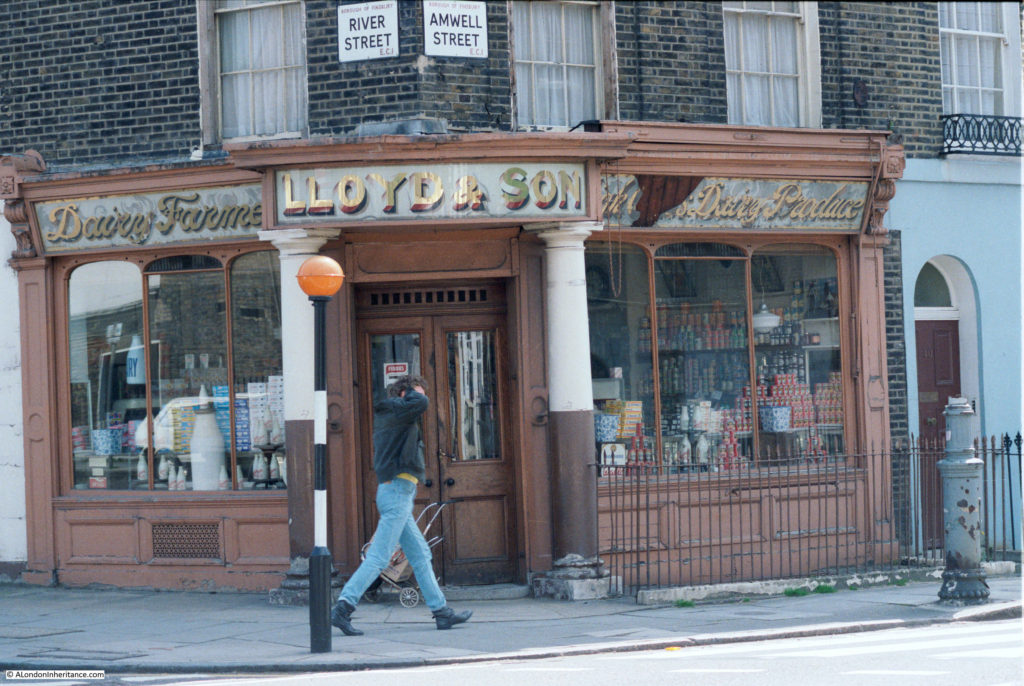
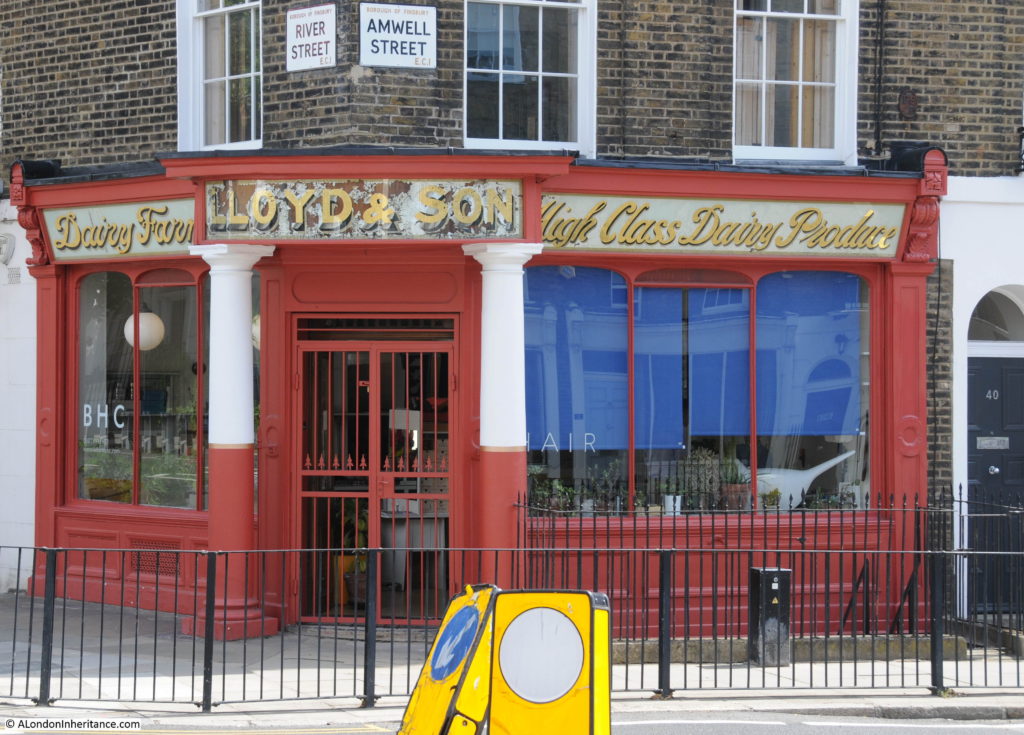
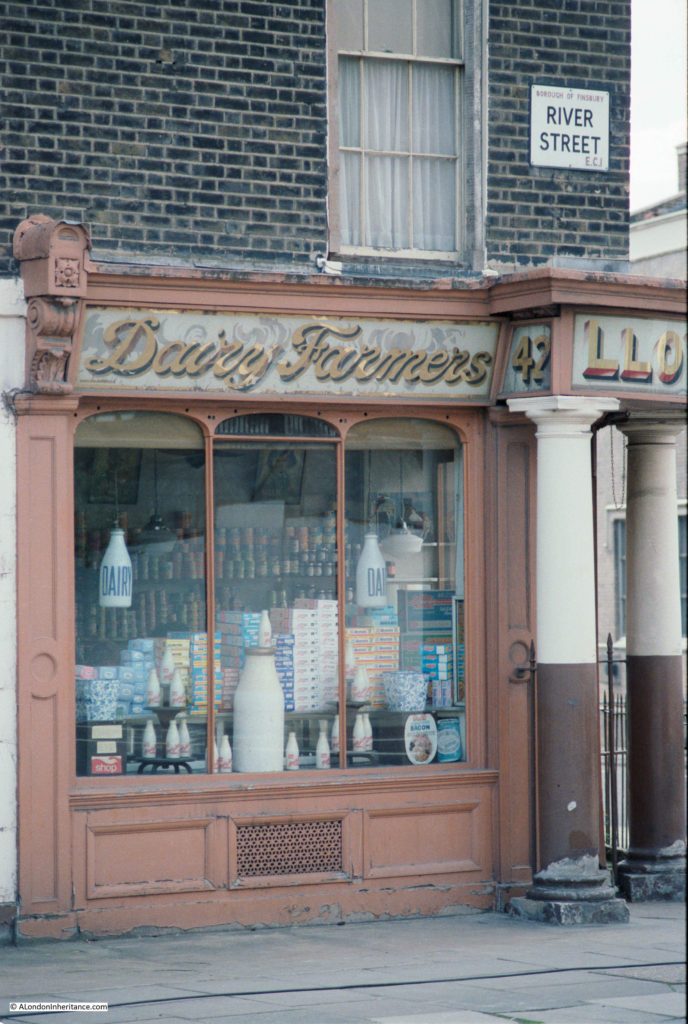
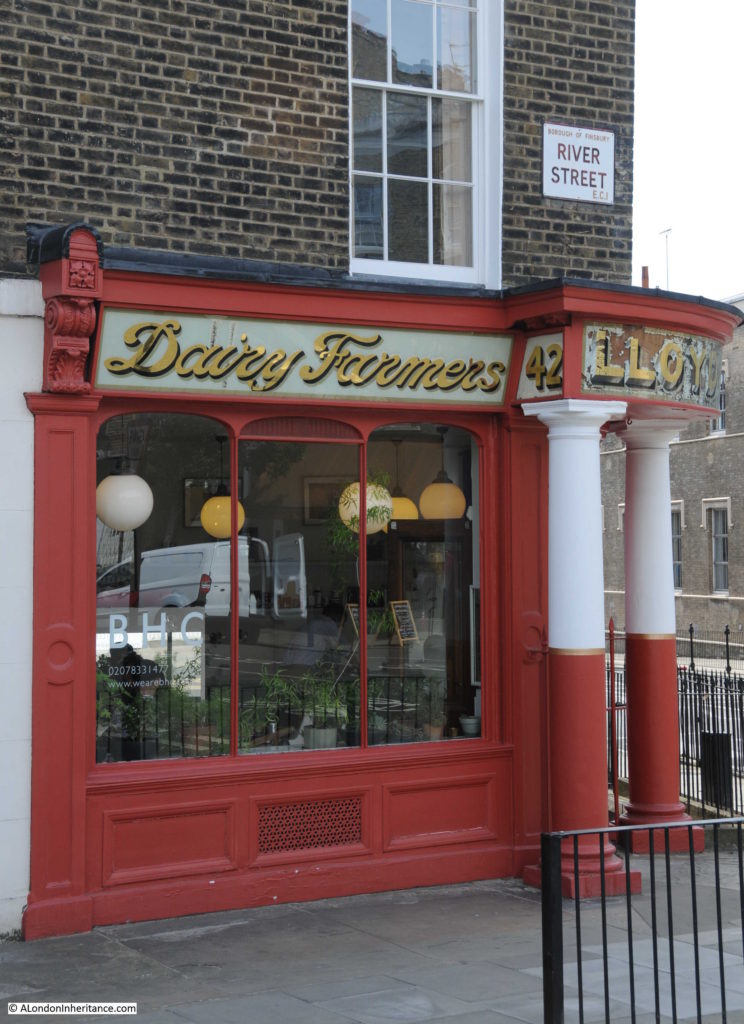
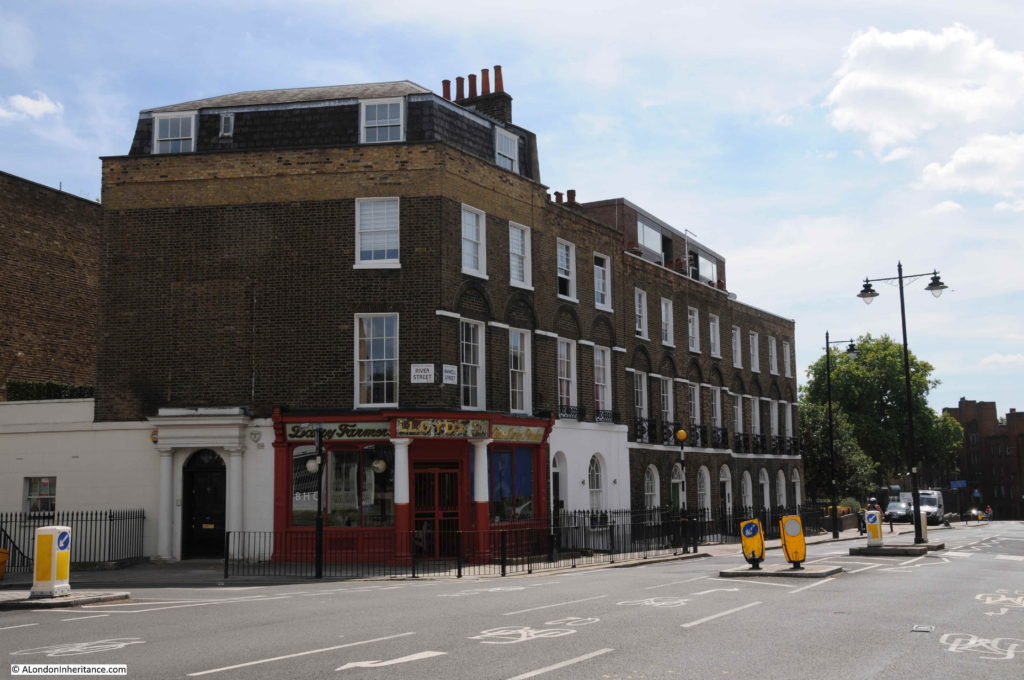
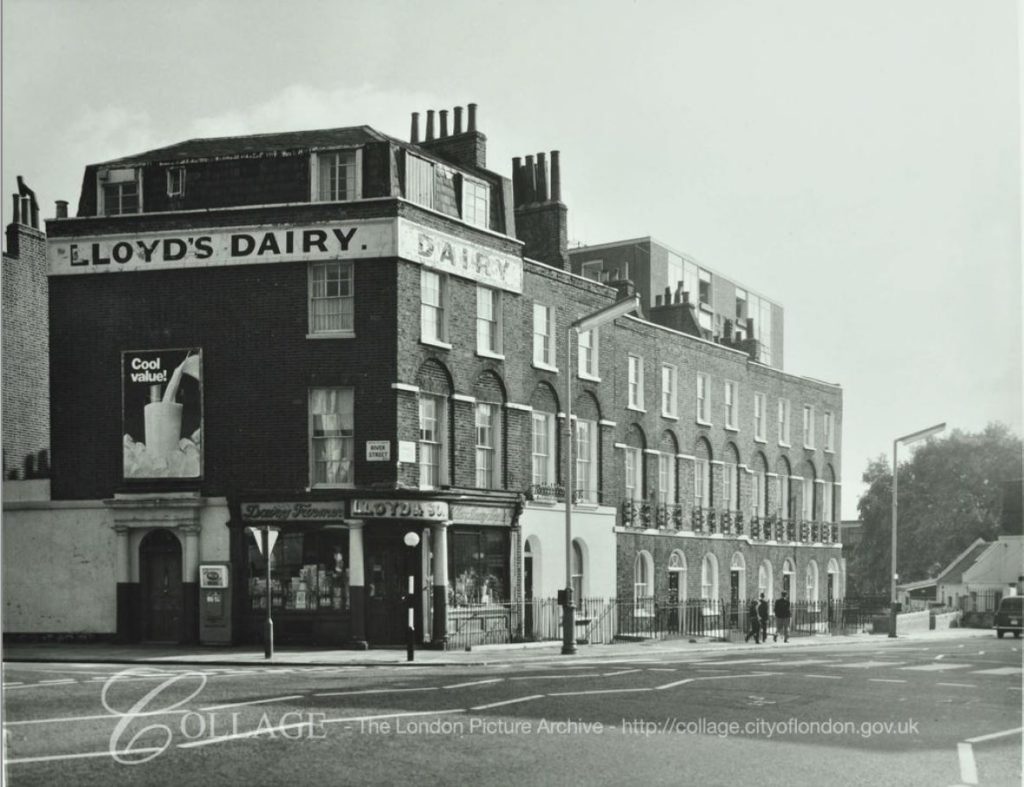
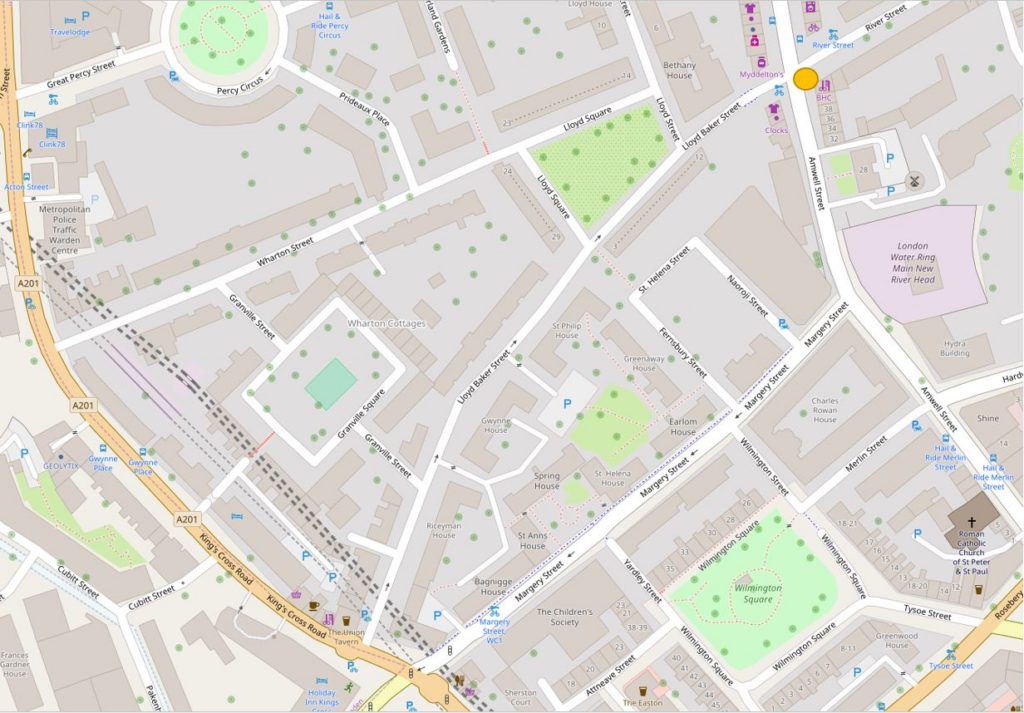
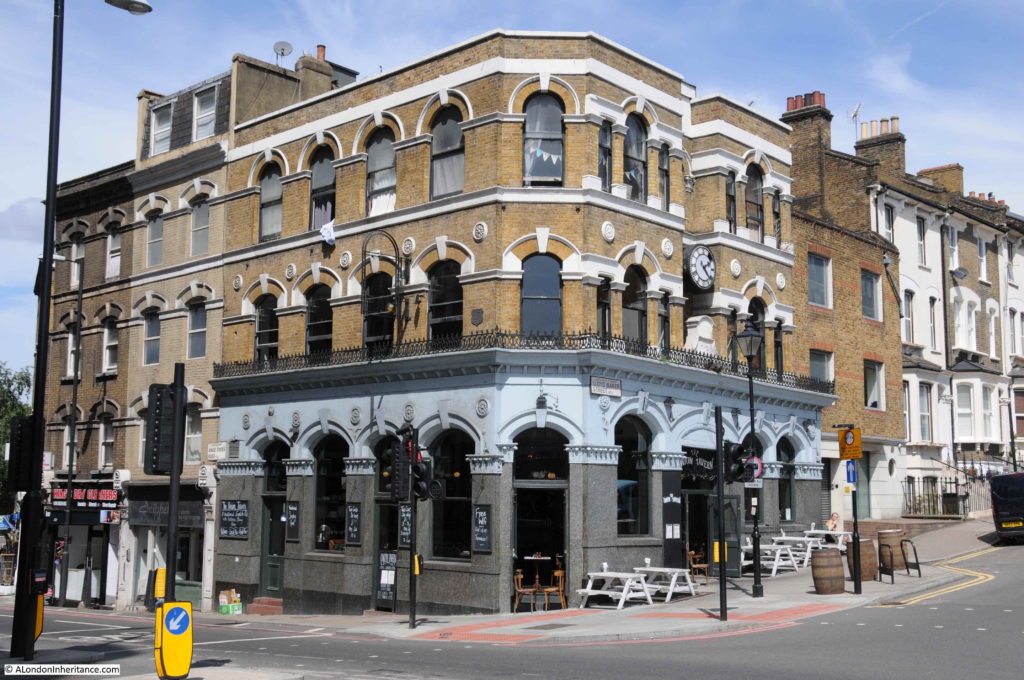
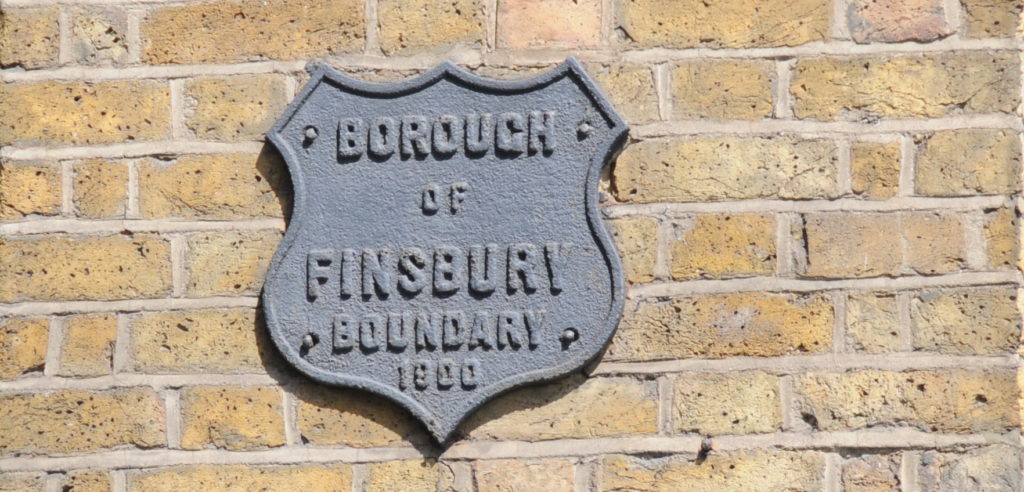

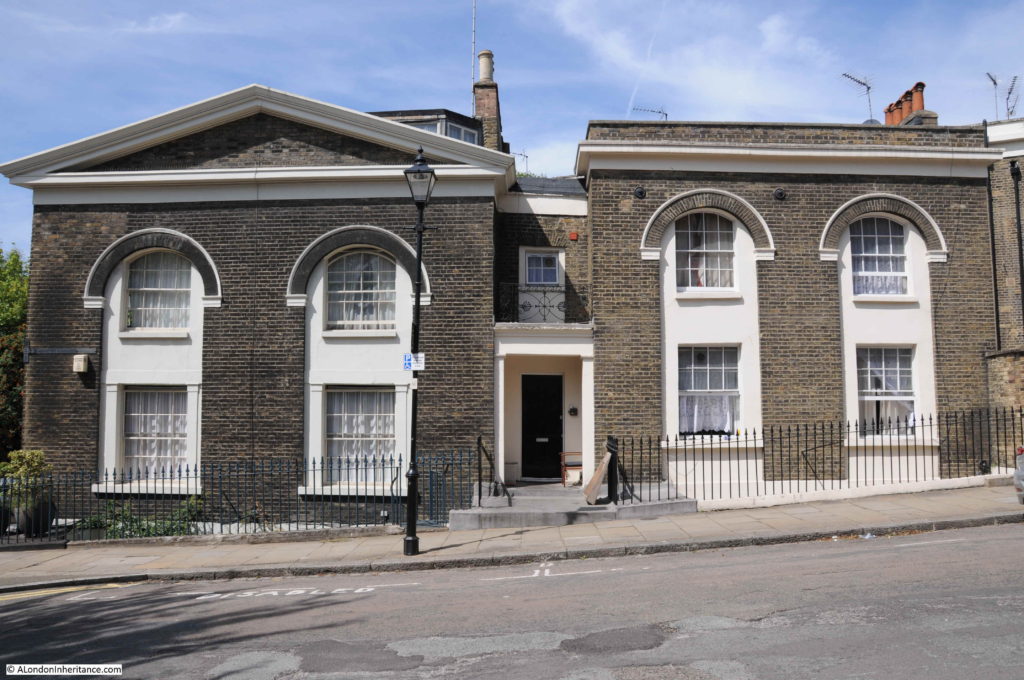

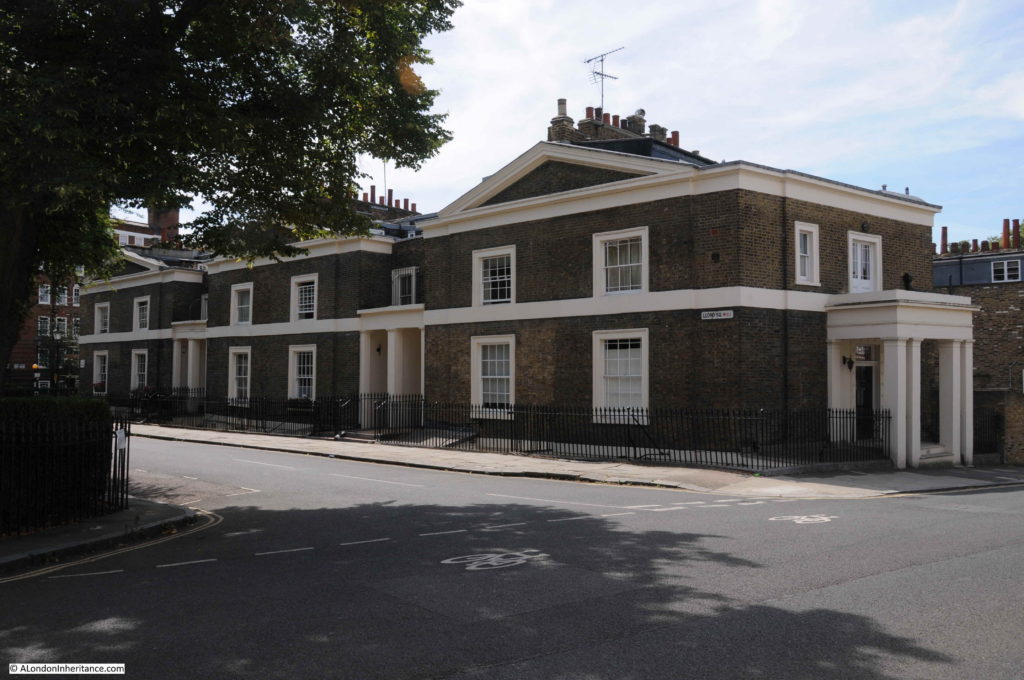
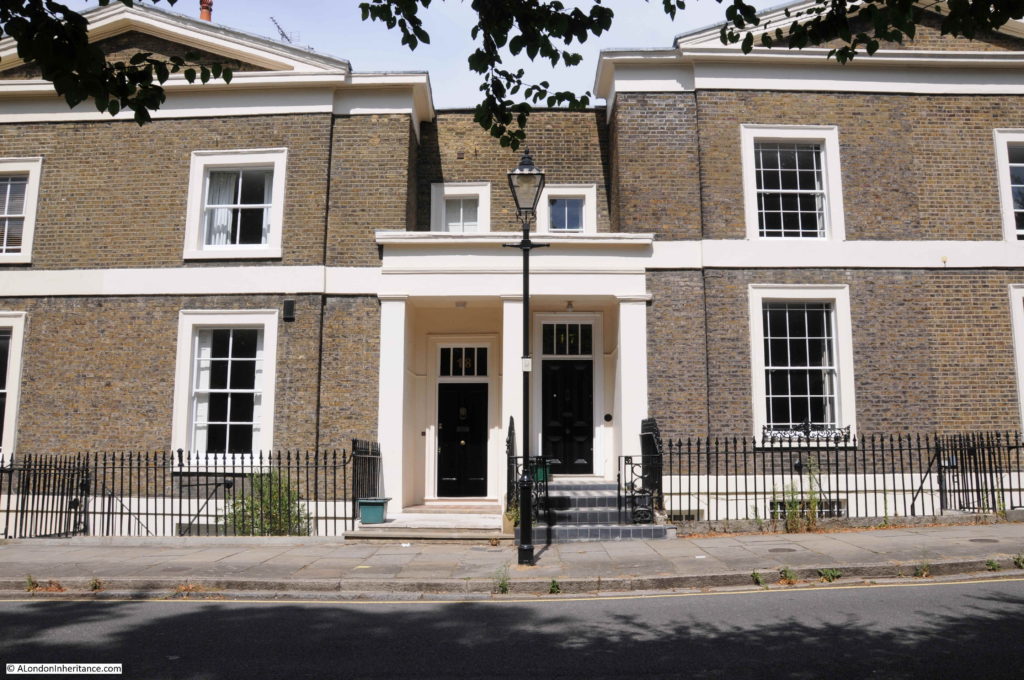
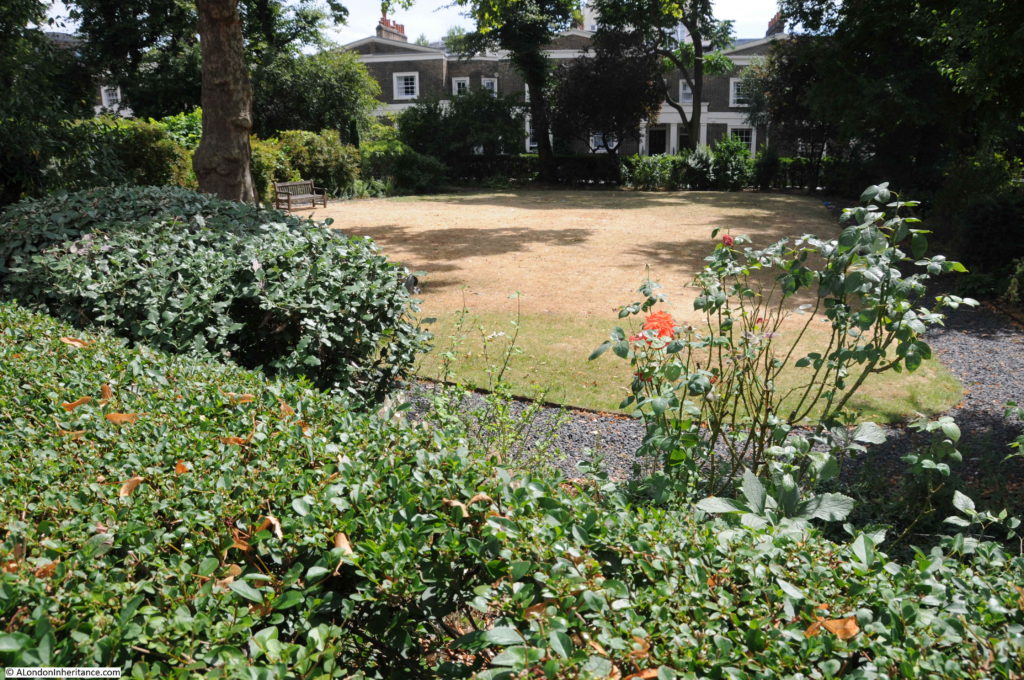
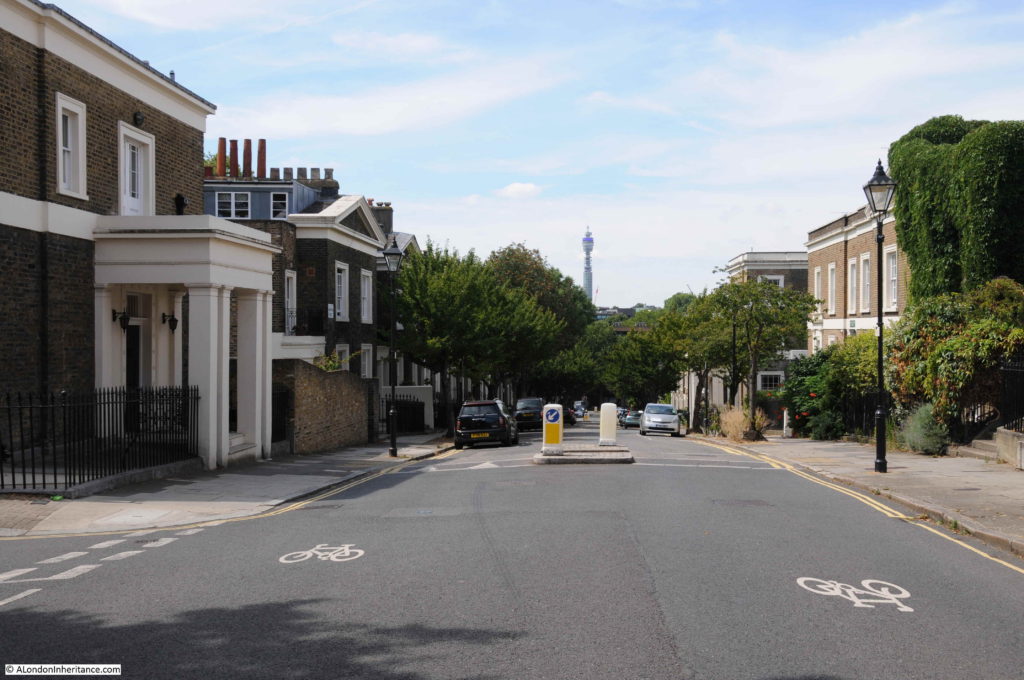
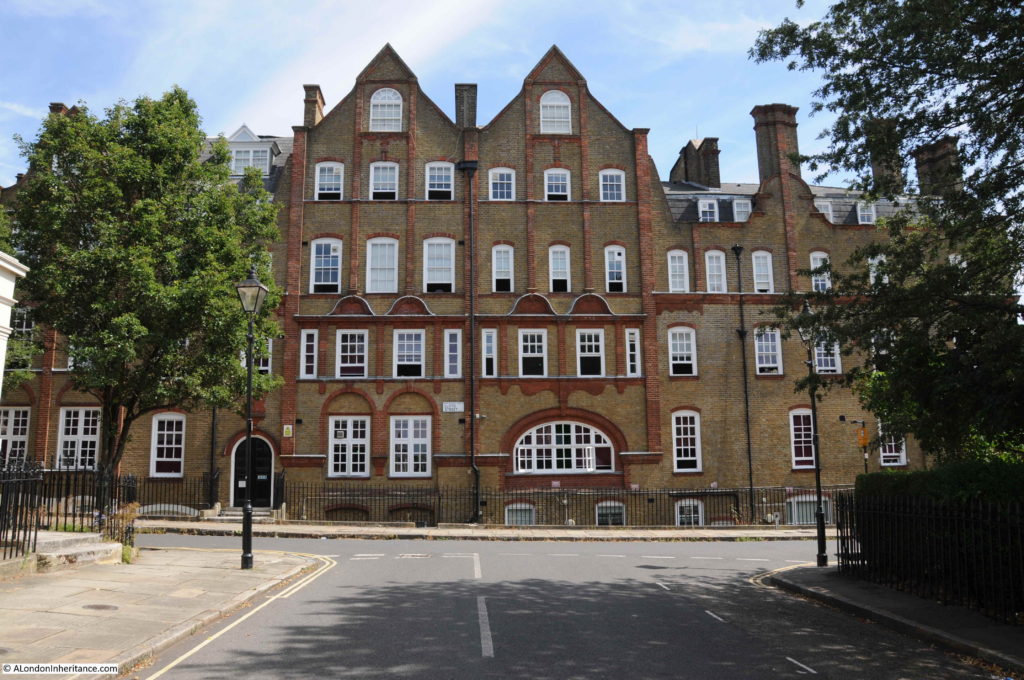
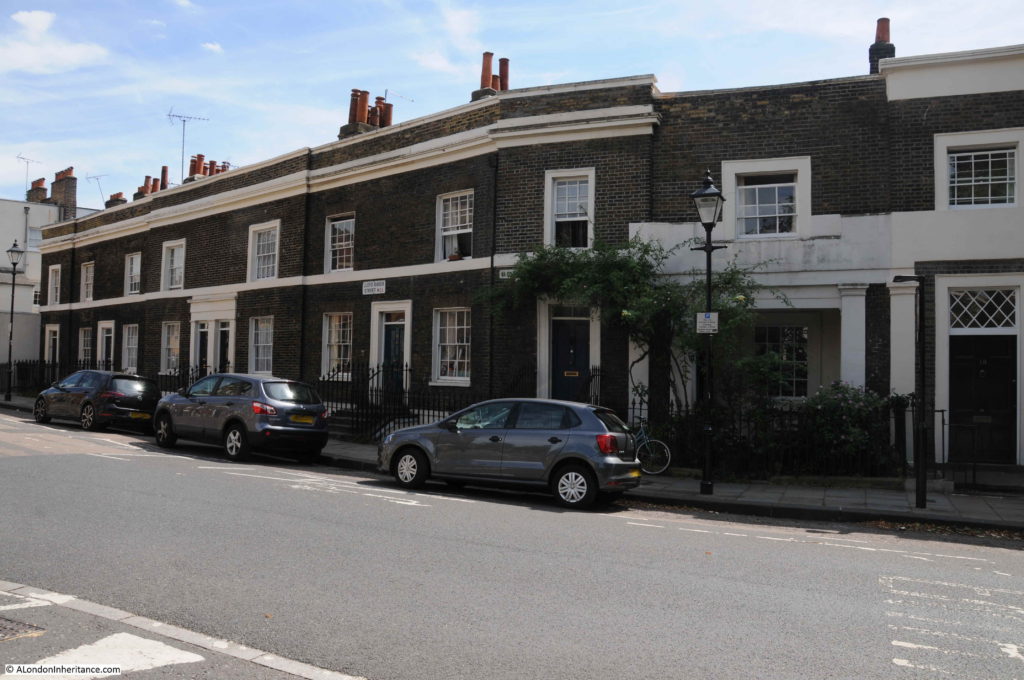
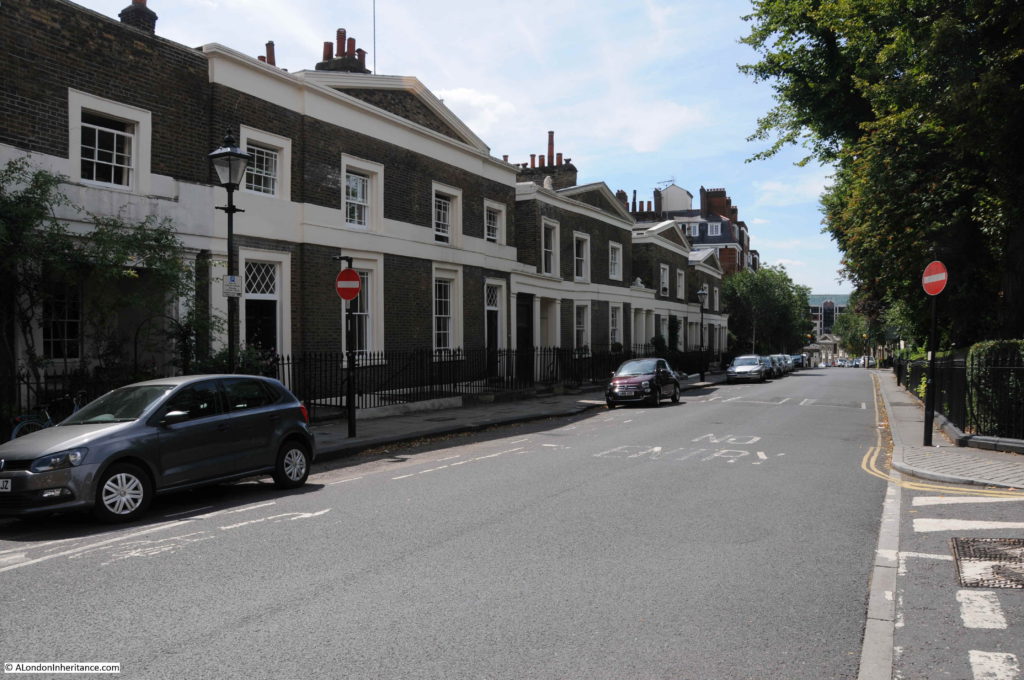
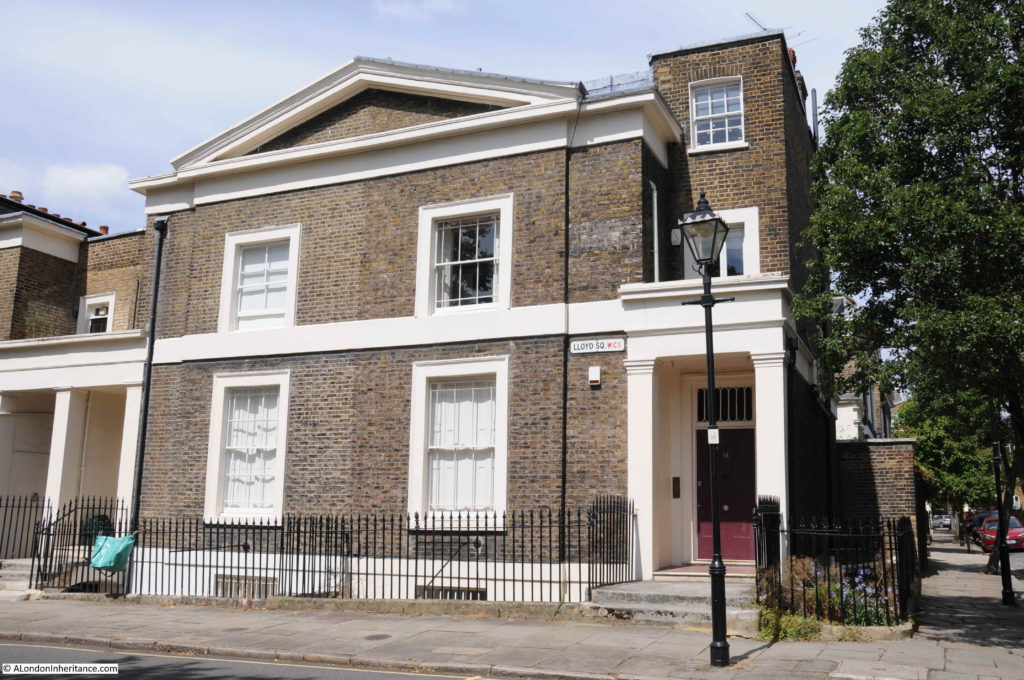
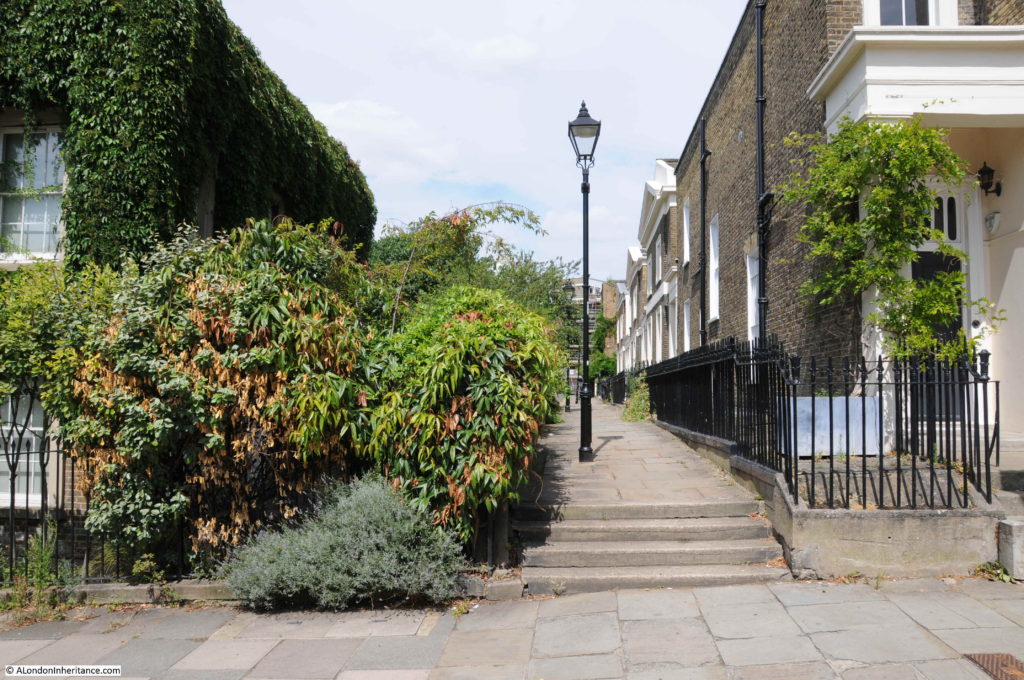
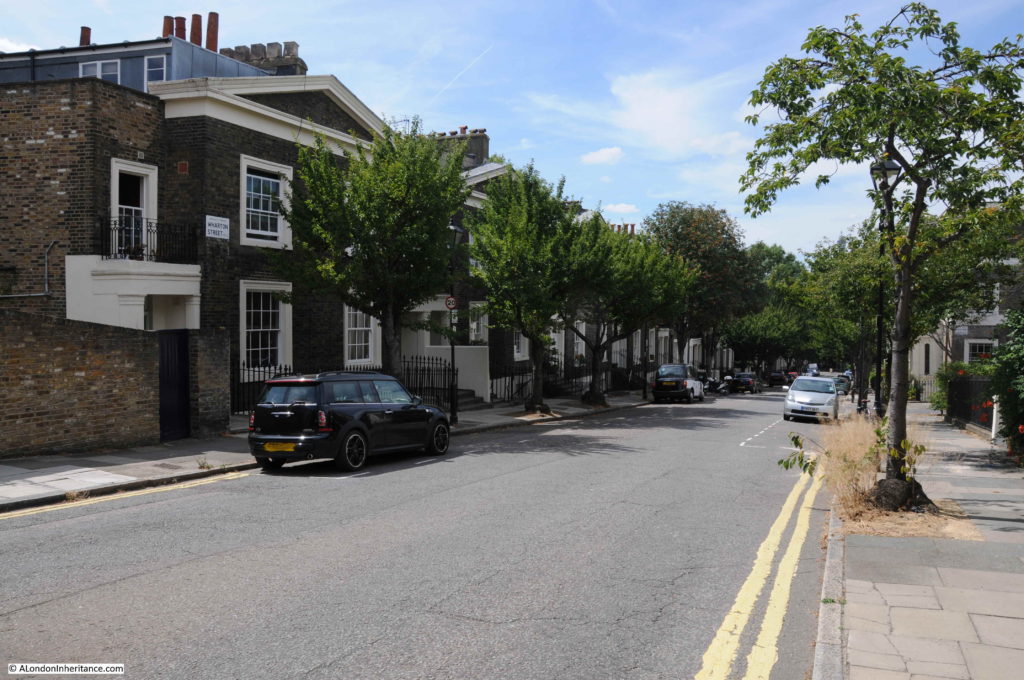
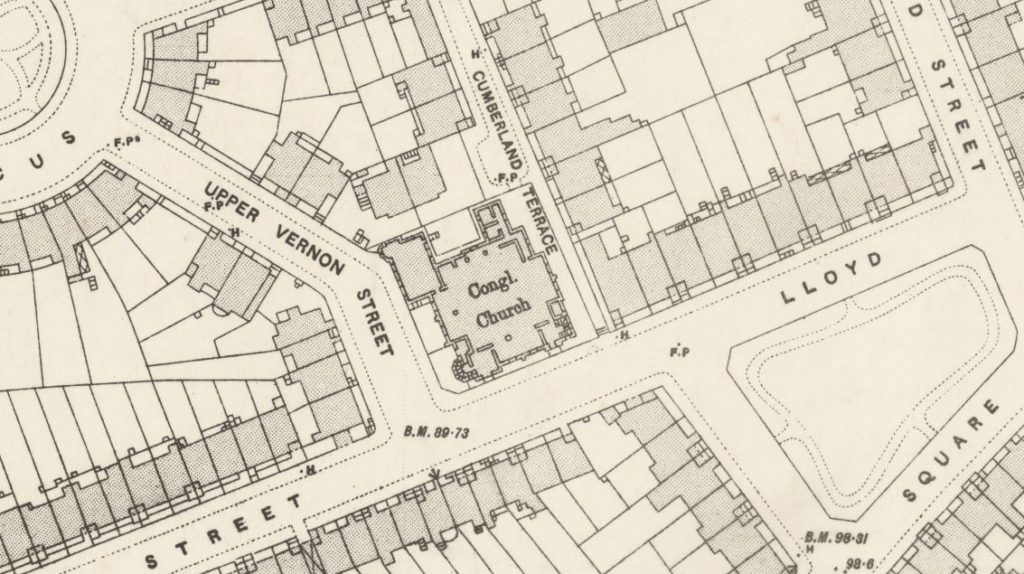
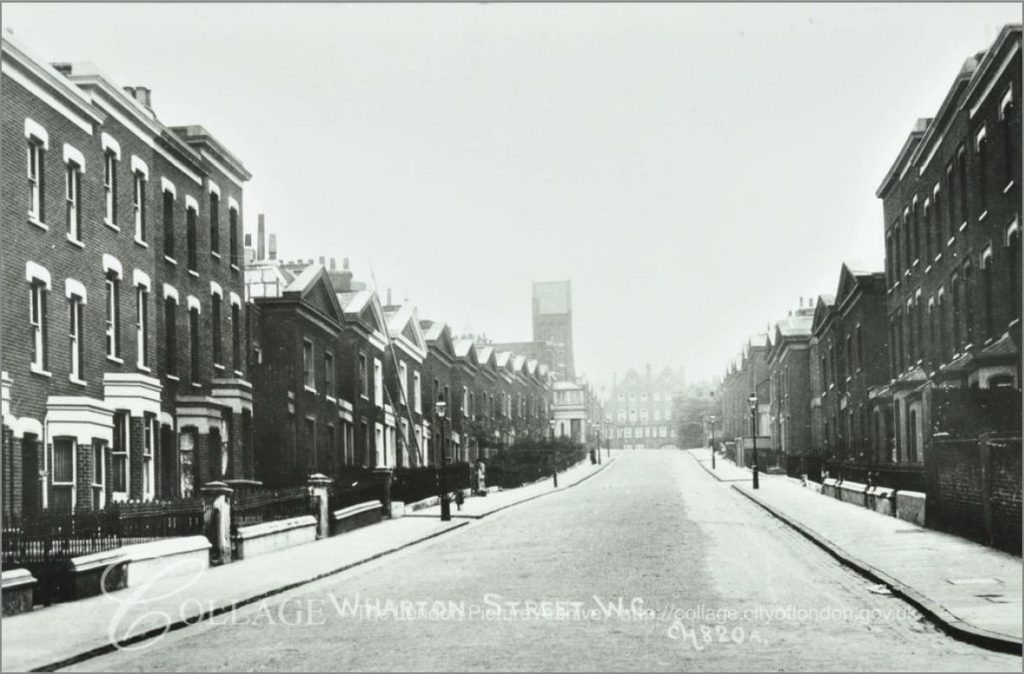

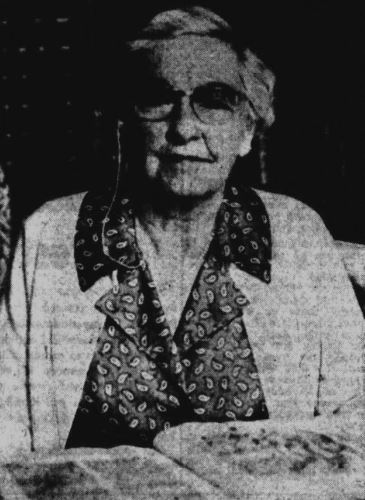
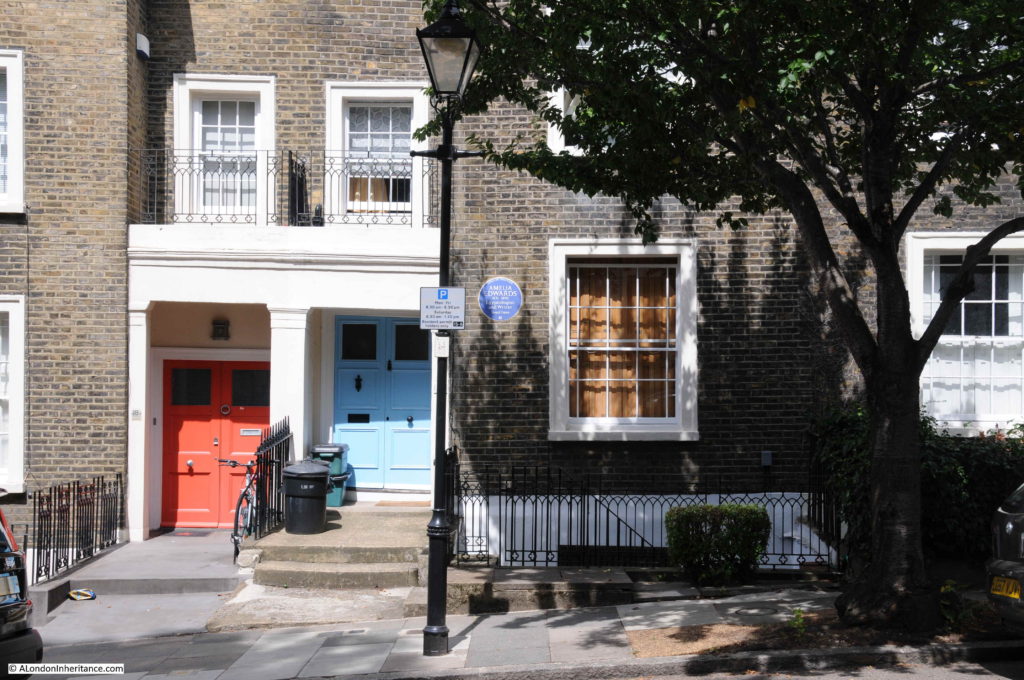
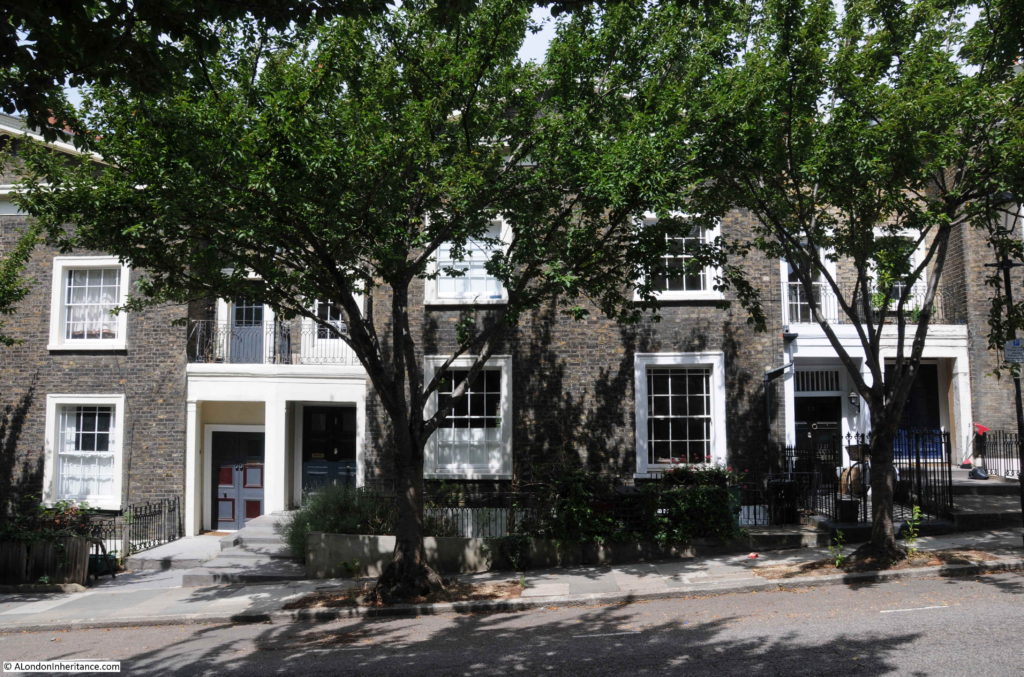
Another fine review of an area I’ve walked through – but never fully explored – when en route from Kings Cross to the London Metropolitan Archives nearby.
Thank you.
Once again, a discovery of somewhere I was totally unaware of- thank you so much.
Another walk along London streets to look forward to.
LIke Frank F I have often walked through this area en route from Euston to the north of the City – and been struck by its beauty. Nice to know a bit more about it. Thanks.
I turn left and hammer it up Wharton Street on my bike a couple of times a week and had a great Aunt who lived in River Street which made your blog all the more interesting to me
This review is an absolute delight and brings back very happy memories I used to work in Finsbury Town Hall between 1967 and 1971 and walked back and forth between Euston Station and the Town Hall on my way to and from work. Often I passed through Percy Circus and by Lenin’s old house, which – during my time – was substantially demolished (without authority) and had to be rebuilt.
Some of the houses shown are very similar to Villa style houses built in Clarence Place, Gravesend. To my surprise I was told by one of the residents of the latter that the builder came from Islington… Small world.
Your article came at an opportune time as I was on a guided walk of this area yesterday with The London Ambler and found it fascinating – I was not aware that such a secluded and interesting area still existed so close to Kings Cross. I was interested in the House of Retreat so looked into it a little. It was sold to the YWCA in 1962 and is now a supported housing project for women –
http://www.sih.org/uploads/jo-folder/Bethany%20House%20brochure.pdf
Some years ago we visited squares in Islington on Open Squares weekend and the Lloyd Baker Square was one of these. A very tranquil and attractive area.
Amwell is a nice village, with a decent pub, The George, and a statue commemorating the chap who made the new river. You can walk from there across the water meadows to the source of the New river, a fine little building that houses a sluice gate where it meets the river Lee or Lea. You can walk there from either Hertford or Ware, both easily accessible from London on the train, and both worth a walk around in their own right.
I have always found this area of particular interest and unique but discovering that there was once a now demolished church in the vicinity is a particular revelation. Continuing along over Amwell Street (which has barely changed in over 200 years) is Myddletton Square. Named after Sir Hugh Myddletton chairman of the New River Company. The SW corner of the square is of particular interest as the line of late Georgian town houses changes direction ever so slightly. Pertaining to the fact that the orientation changed during construction. There were 4 firms engaged in building the houses which took a number of years to complete. This is reflected in the variation of styles.
Another very interesting post, thank you
Thank you for another interesting and informative post.
Since you write about how London has changed over time, I thought you and other readers might be interested in this project/website called Layers of London:
https://beta.layersoflondon.org/
It is still being developed, but its aim is for individuals, groups, schools and other organisations to add stories and histories to places in London. As more is added, the richer a resource it will become. There are a number of map layers from the Tudor period up to the 1940-60s which can be layered to see change over time. I’m finding the Ordnance Survey map layer for the 1940-60s particularly useful as it has street numbers on it, although these do change over time.
I hope you’ll find it equally useful for your future research.
I also had the pleasure of finding the former dairy (I love old shop fronts) a few years ago when walking around that area trying to locate all the places mentioned in the book The nether world by George Gissing, an excellent late-nineteenth novel set in Clerkenwell. Thank you for all the photographs and history. Such a pleasure.
Thank you for this fascinating information about the Lloyd Baker Estate. Like others, I too discovered it by accident, during a random stroll from Bloomsbury to Islington.
Trivia: in the 2011 film of John Le Carre’s “Tinker Tailor Soldier Spy”, George Smiley (Gary Oldman) is seen briefly returning to his home, the exterior of which is 18 Lloyd Square. The letters in his hallway show a fake address (also number 18, I assume for continuity with the number on the front door). The Lloyd Square exterior is unmistakeable as the design of these very attractive villas is so distinctive. I guess that the interior is somewhere else entirely, probably a studio set
I enjoyed the history of Lloyd Baker Estate, as I lived in the area in the 60s. The Lloyds (no relation to Lloyd Baker) still ran the corner shop with the display of milk bottles and cereals that you include. My mother was born & brought up in Claremont Square and related that in her childhood the dairy had what they called ‘the brass cow’ which dispensed milk into your jug for a few pence when the shop was closed. I have forgot in which street the cow who supplied the milk was housed. Like so many pockets of London it still retains a bit of a village air.
There was a milk and orange machine on river street side,I I was born in river street and lived there for 10yrs, happy memories
I was intrigued when reading the original post as to whether we were supposed to connect the Lloyd of the dairy with the Lloyd of Lloyd-Baker. Thank you for clarifying that there is no relation between these. My Lloyd family ancestors also resided in Clerkenwell going back four or five generations so would be interested if you have further information on the family who owned the dairy.
For many years I used to glance in the direction of this estate but I was always on my way somewhere else. Eventually I decided to explore, bit by bit, following a hunch that there were underground waterways in the area. It is a truly fascinating part of London, so charming and pretty and full of turns and twists. Time to take another look.
Thanks for this posting, and to commenter Bruce for pointing out the interest, and history, of Myddleton Square immediately to the east. I had not noticed the houses out of line there; I will do next time I stroll through.
Thanks also for the Ian Nairn quote about the terraces “dutifully climbing Lloyd Baker Street, two by two.” I discovered the Lloyd Baker Estate via “Nairn’s London” as I pieced together a walk on a July Saturday morning from Bunhill Fields and Clerkenwell through Finsbury, and then on through Islington and Highbury. This was also the first time I stumbled upon Exmouth Market. Lloyd Square is indeed lovely. Nairn noted that Lloyd and Myddleton Squares “need to be seen as part of an unselfconscious chain, not as isolated architectural specimens.”
What I recall most of all from that July morning walking up Lloyd Baker Street toward the square is exactly what Nairn advises one to look for: “…what you remember is half a doorway, someone’s curtains, the flicker of leaves in the sunlight or wet bare branches.” The quiet, intimate movements of a summer Saturday morning amidst sublime buildings. That memory and the beauty of the architecture have lured me back a couple times on subsequent walks. Thanks again for the post.
I live in Wharton Street. I first discovered it in the 1960’s when Merlins Cave (now gone) had jazz in the bar on Sundays, George Melly was often performing. I remember walking down Wharton street at the time thinking how Dickensian and wonderful the area was. The area has changed considerably over the years. I used the dairy when it had the dummy milk bottles in the window and the shop was lit with one light bulb. Many of the houses once owned by Islington have sadly been auctioned off. When I moved here 30 years ago there were still quite a few Italian families around who attended the Italian church in Clerkenwell . The book Riceyman Steps is set in the area. The steps being the ones which lead from Granville Square down to King s Cross Road.
A unique and interesting place to live. Thank you for your post
Thank you for posting these photos and information. I love this area. My mum lived in Granville Square up until 2010 and when we visited we’d have a wander around Percy Circus, Lloyd Square and Cumberland Gardens, just taking in the wonderful architecture. We also used to walk to St Mark’s Church and to the pub (which had changed it’s name). We would visit the Dairy Shop which was a Deli when mum lived there.
Mum had worked in the YWCA in/off Lloyd Square and she told of Ingrid Bergman visiting to film a scene when she played Golda Meyer. This was inside the building as there some gates that were of interest (I’m still trying to find out more details). Mum had also lived in Amwell Street and it was from her I found out about the New River and how it connected to Amwell in Hertfordshire where a friend of mine lived. Mum had a very interesting book on London and it showed an old print of Granville Square and the church that used to stand there – it was small park and fenced play area when she lived there.
We’ve been on many London walks and I must return to Islington again. When we were young, living on an estate in Bethnal Green (another area full of wonderful history) on a summer evening mum would take us, and most of the people who were interested, on a walk from Bethnal Green, through to Liverpool Street/Cheapside/Bank up to London Bridge and back. Wonderful times
Thank you
I lived on River St opposite Lloyds dairy until 2005. Old Mrs Lloyd ran the shop seemingly singlehandedly until I think about 2000 when I believe she died. Not surprisingly it was rather dilapidated in its final years but Mrs Lloyd was a lovely lady always happy to chat. I also have great memories of Raj who for many years ran the Amwell newsagents just around the corner, which appeared in the opening video of the Andrew Marr Sunday morning show when Andrew collects his morning paper. Great memories of living there, a real community feel where we all knew our neighbours. Thanks for an interesting and enlightening article!
I was born in river street .I remember the newsagents when it was called birds, nxt to doctors surgery
Great photos and stories! I am looking for my great grandma’s brother and family. I have notes his daughter Bessie and her husband Jack Firman owned a tobacco shop on Tottenham Road for 50 years. Have you seen that in any old photos?
I lived in the YWCA Amwell st in 1998/99. The little old lady Mrs Lloyd and her son owned the dairy. He used to shout up to her and she would come down with her cute self and wispy white beard hairs. she died in 1999/2000 and i never saw what happened to the shop after that, so it was good to see it still has its original sign.
Hi David! I just found the grave of Margaret and Lloyd Lloyd, who ran the Lloyd Dairy until they passed away in the mid 1940’s, whereupon it looks as if their son David took over. The headstone that I found is in Welsh, and I know that there was a big Welsh community in this part of London (and might still be for all I know – there’s still the London Welsh Centre on Gray’s Inn Road.
Hi Vivienne.. That is brilliant, thanks. At which cemetery did you find the grave? There seem to have been many Welsh dairies north and west of the City. There is also an active Welsh chapel in Fann Steeet, just north of the Barbican.
Lloyd Dairies was owned by relations of mine. My father Geraint Llewelyn Burkitt was born and bred in Llangeitho in Ceredigion. His Great Uncle was Llewelyn Lloyd whose nephew inherited Lloyd’s Dairies from his parents. Dai Lloyd Amwell Street as he was known had two children, David Huw Lloyd and Lloyd Loyd, both barristers.
It’s in St Pancras and Islington Cemetery, which is actually in East Finchley (go figure). Let me know if you fancy a visit after the lockdown is over, I’ll do you a tour 🙂
Vivienne, that would be good. It is a cemetery I have not had the chance to visit. I assume it is in East Finchley as the inner London churches were closing their graveyards, or had space limitations and were buying land further out to set up new cemeteries.
Indeed – there are estimated to have been a million interments from Islington and what is now Camden. East Finchley cemetery was previously owned by Westminster c.c. and part of it still is – it’s much posher than St Pancras and Islington.
You may be interested to hear that Lloyd’s features in the second series of the very funny UK spoof fly on the wall documentary ‘Operation Good Guys. The series, which ran from 1997 – 2000, follows an utterly inept team of Metropolitan Police officers.
The episode in question, ‘Forensics’, can be found on Daily Motion (https://www.dailymotion.com/video/x5nf9ht). Lloyd’s exterior appears at the 2:08 mark, after which there is a sequence filmed inside the shop (at that point a general store) where a forensics exercise degenerates into the team stuffing their faces with sweets!
I have a family photo from the 1880s and in the process of figuring out where it was I discovered it was the same Lloyd’s Dairy building, 42 Amwell St. They had a grocer’s store and census records showed they lived above. So interesting to see the history of it.
As a travelling Australian in the early 1980’s I was employed once a week as a cleaner in one of the villas by ‘Mrs (Susan) Watson’ who was herself employed as a house keeper to author George Orwell in her youth. She talked about him quite often. She would send me up the hill to Lloyd’s (she was quite scathing about the owners (there was obviously some history there) to buy butter or milk, collect her pension from the nearby post office and if I was in favour that particular week (she was very exacting about all facets of life) a fresh cream chocolate eclair from a bakery very close to Lloyd’s. I was struck by the whole experience of the estate and the imposing ‘Mrs Watson’ which was quite an adventure for a suburban Australian boy.
Thank you for your work documenting the area.
I lived in Wharton street until 1973.and left to travel and settled in Australia. Before I left I had a free tree planted outside our house from the Finsbury Council It would be 50 years old now. Miss Lloyd Baker visited all her tenants.
She offered one of her homes to polish refugees.
She was a kind woman
My great grandfather Edmund Thomas Speaight was born at no. 5 Upper Baker Street (as the top end of this street, near Amwell Road, was previously known), in 1840. Number 5 is now number 19 Lloyd Baker Street. I walked past the house this morning, on a trip to London. My great great grandfather William Speaight (Edmund’s father) was a printer by trade, working in the City of London. In the 1841 census the neighbourhood ‘heads of household’ are merchants, stonemasons, surgeons, stoke brokers, engravers and some households have one servant – like my ancestors did. A fascinating post. Thanks.
Are we to make any connection between the dairy Lloyd and the Baker Lloyd? The article, as informative and enjoyable as it is, rather leaves this question in the air.
A 1966 Documentary currently on player called A Tenant’s Life shows Olive Lloyd – Baker I believe.
https://youtu.be/kLQ9o3ZSEFQ?si=Bh_9lv2Rl2F13OiM